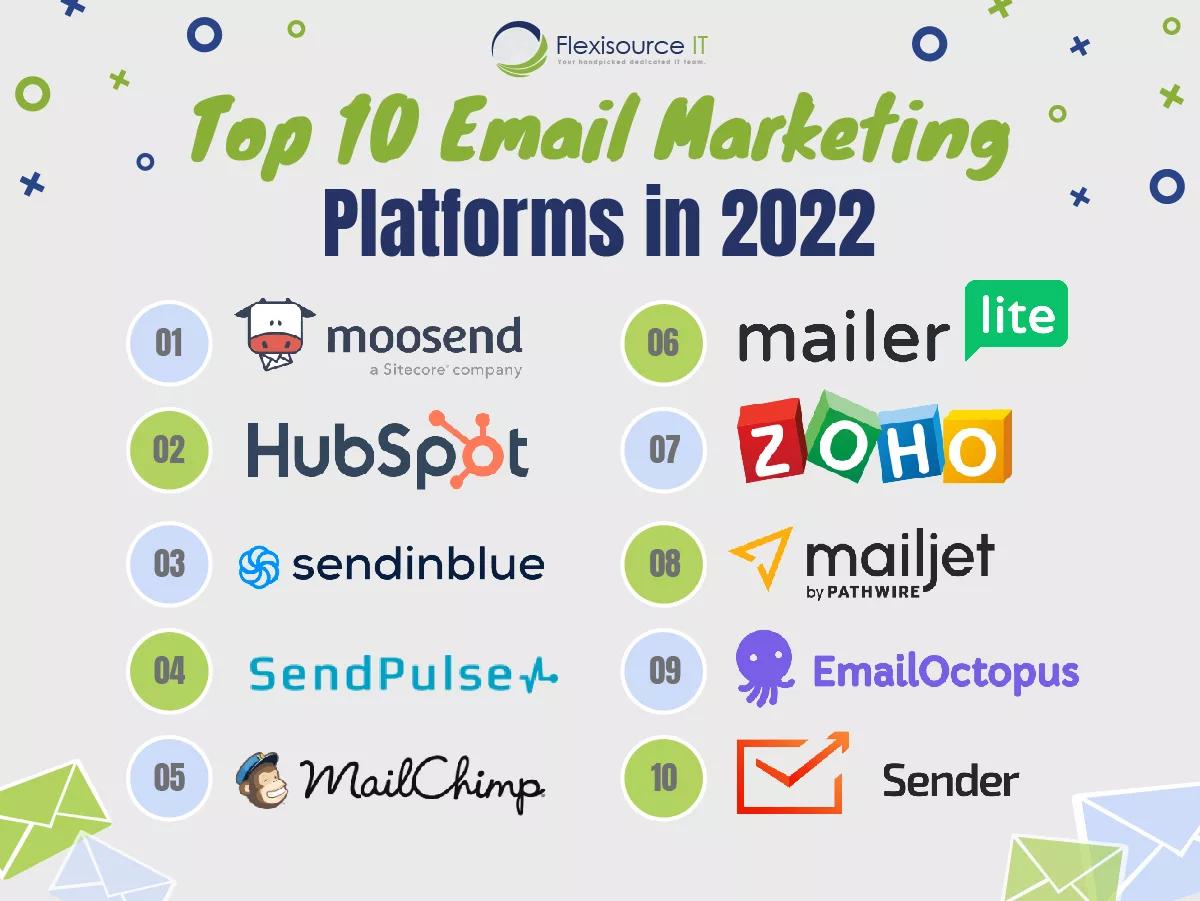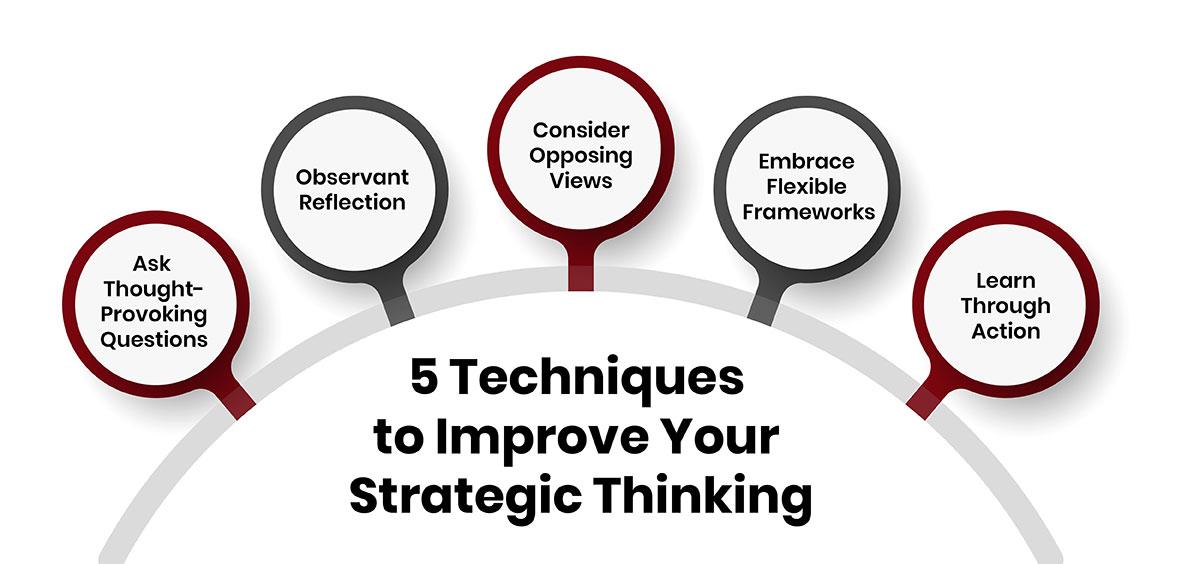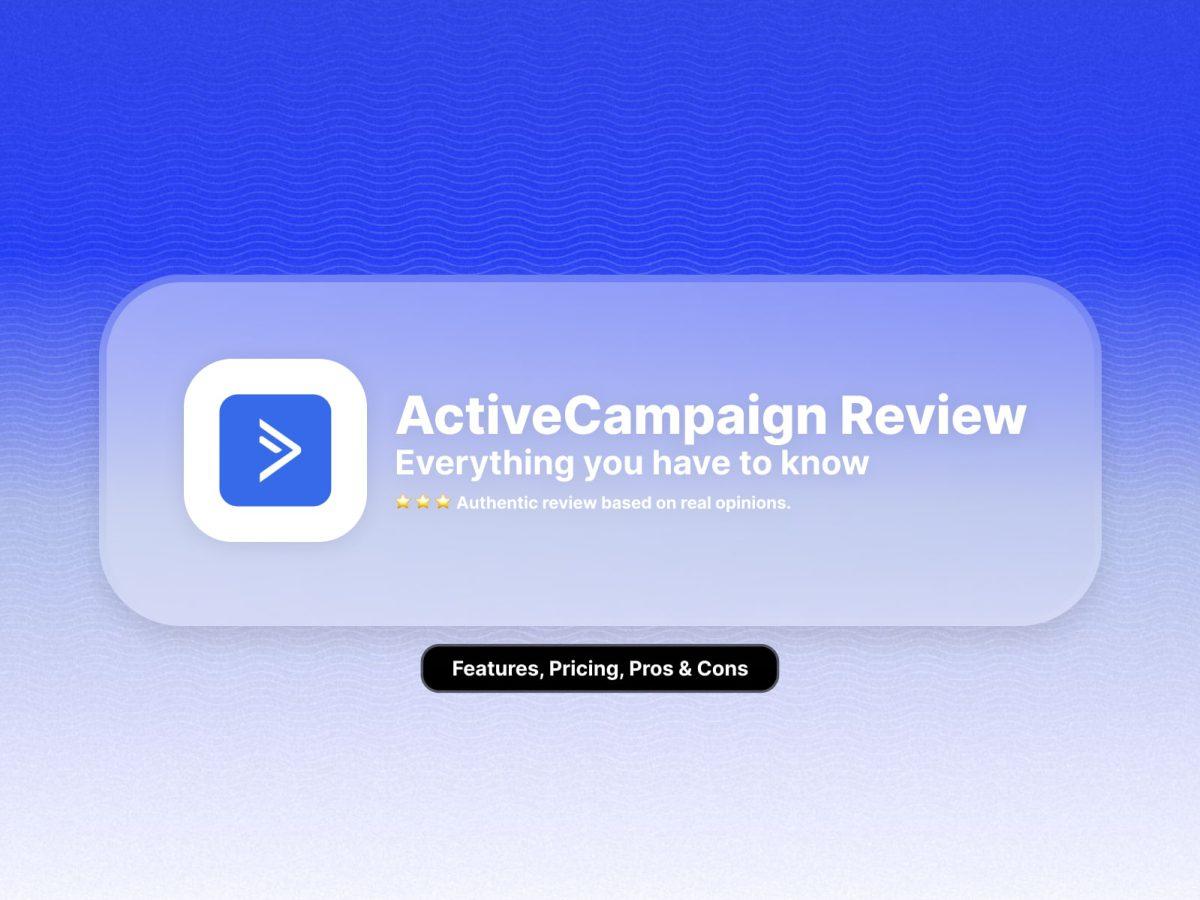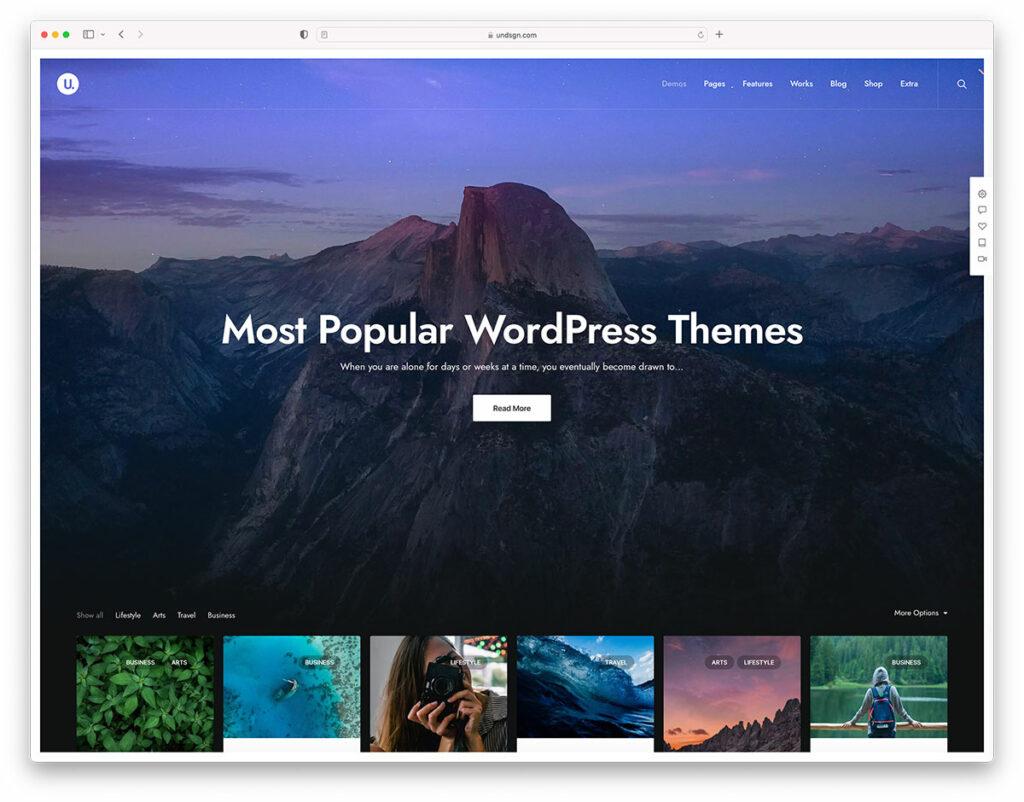Title: A Guide to the 14 Best Email Marketing Platforms
In the fast-paced digital world we live in, connecting with your audience has never been more crucial. Enter email marketing—a powerful tool that not only helps you reach your customers directly but also nurtures those relationships over time. If you’ve ever felt overwhelmed by the sheer number of email marketing platforms out there, you’re not alone. With so many options to choose from, how do you know which one is the right fit for your business?
That’s where we come in! In this guide, we’ll walk you through the 14 best email marketing platforms, each offering unique features tailored to meet diverse needs. Whether you’re a small business owner just starting out or a seasoned marketer looking to streamline your campaigns, we’ve got the inside scoop on the tools that can help take your email strategy to the next level. So, grab a cup of coffee, sit back, and let’s dive into the world of email marketing—where the right platform can make all the difference!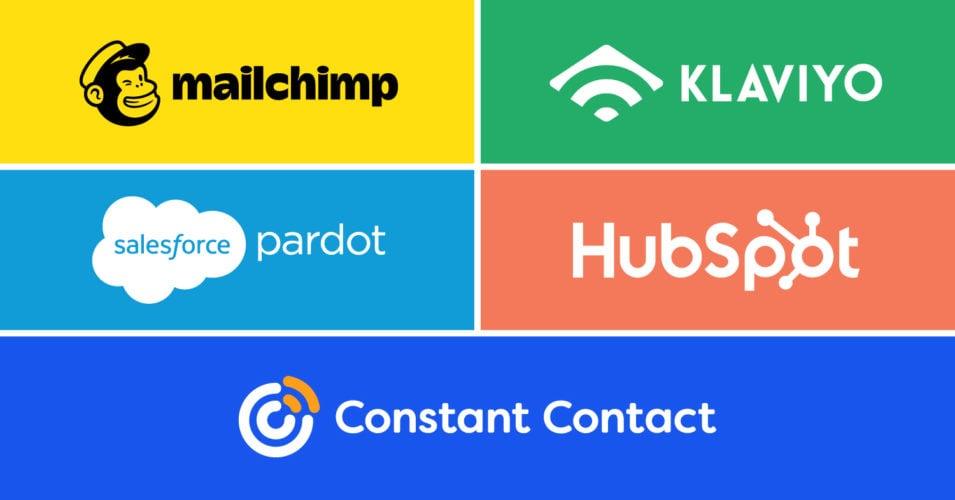
Choosing the Right Email Marketing Platform for Your Business Needs
When it comes to email marketing, selecting the right platform can be a game-changer for your business. Each platform offers a unique set of features tailored to different needs, making it crucial to identify what suits your specific goals best. Here are several factors to consider:
- User Interface: A clean and intuitive UI can significantly reduce the learning curve, enabling you to deploy campaigns faster.
- Automation Capabilities: Look for platforms that offer robust automation tools, allowing you to send personalized messages based on customer behavior.
- Integrations: Ensure the platform integrates smoothly with your other business tools, whether it’s CRM systems, eCommerce platforms, or analytics tools.
- Pricing Structure: Compare various pricing plans to find one that fits your budget, especially as your subscriber list grows.
To help you navigate your options, consider the following key features that are often crucial for businesses:
| Feature | Description | Importance |
|---|---|---|
| Segmentation | The ability to categorize your audience into different segments for targeted messaging. | high |
| A/B Testing | Test different subject lines or content to see what resonates best with your audience. | Medium |
| Analytics and Reporting | Extensive reports on open rates, click-through rates, and conversions. | High |
| Mobile Optimization | Ensure your emails are mobile-amiable to reach users on the go. | High |
Additionally, consider the level of customer support provided by the platform. A responsive support team can make a significant difference, especially when you encounter issues or have questions about features.Reading reviews and testimonials can also provide insights into how other users have experienced their journey with the platform.
take advantage of free trials or demos whenever possible. This hands-on experience can help you gauge whether a platform truly meets your expectations and aligns with your business strategies. Remember, the right choice will empower you to foster stronger relationships with your audience and drive business growth.
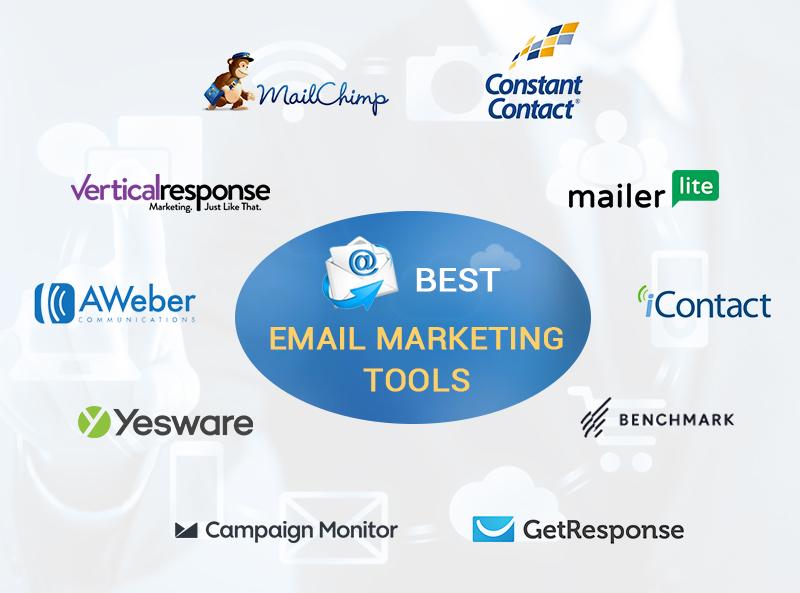
Exploring Key Features That Make Email Marketing platforms Stand Out
When it comes to selecting an email marketing platform, understanding the key features that differentiate them can lead to more effective campaigns and better engagement with your audience. here are some essential elements that set the best platforms apart:
- User-Friendly Interface: A seamless and intuitive interface is crucial for ease of use. Platforms that prioritize user experience allow marketers to create, schedule, and send emails without the steep learning curve. Drag-and-drop editors and pre-built templates can simplify the design process greatly.
- Automation capabilities: Advanced automation features enable marketers to set up personalized email sequences based on user behavior.This means that subscribers recieve timely and relevant messages, improving open rates and conversions.
- segmentation and Targeting: Effective segmentation tools allow businesses to categorize their audience into specific groups based on various criteria such as demographics, purchasing behavior, or engagement levels. This targeted approach ensures that the right message reaches the right audience, enhancing overall effectiveness.
Additionally, robust analytics and reporting features are vital for measuring the success of email campaigns. Top-tier platforms offer insights into open rates, click-through rates, and conversion metrics, enabling marketers to refine their strategies and increase ROI. Having the ability to A/B test subject lines and content can also significantly improve email performance.
Integration with other tools is another standout feature. Whether it’s CRM systems, e-commerce platforms, or social media, the ability to seamlessly connect with other software can streamline workflows and enhance overall marketing efforts. Platforms that offer a rich library of integrations empower marketers to create more cohesive campaigns across various channels.
| Feature | Benefit |
|---|---|
| User-Friendly Interface | Reduces the learning curve for new users. |
| Automation capabilities | Saves time and increases engagement with timely messages. |
| Segmentation and Targeting | Delivers personalized content to increase relevancy. |
| Analytics and Reporting | Provides insights for data-driven decision making. |
| Integration Options | Enhances workflow efficiency and campaign cohesion. |
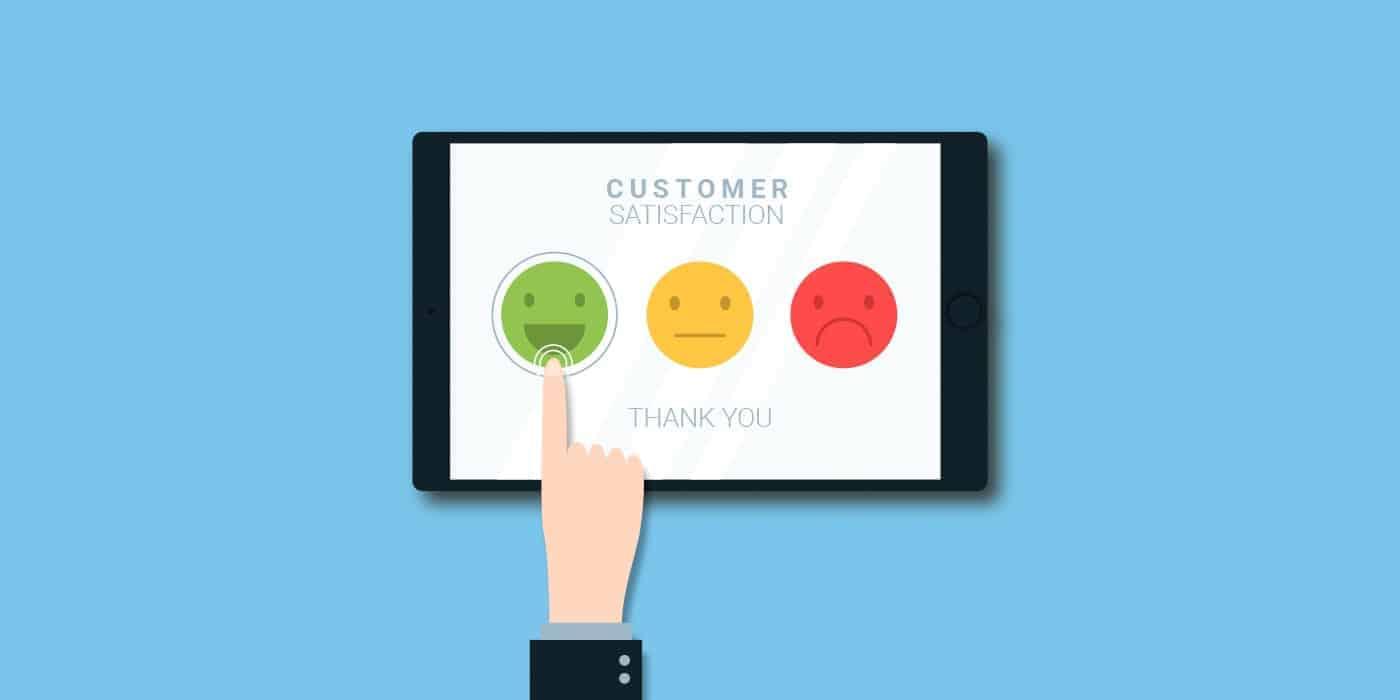
User Experience Matters: A Look at the Most Intuitive Interfaces
In today’s digital landscape, having an email marketing platform with an intuitive interface is crucial for maximizing engagement and efficiency. an interface that feels natural and easy to navigate allows marketers to focus on crafting compelling campaigns rather then struggling with intricate tools. With that in mind, let’s explore some of the standout features of the most user-friendly email marketing platforms.
First and foremost, a drag-and-drop editor is a game changer. It simplifies the design process, allowing users to easily customize their emails without needing extensive coding knowledge. This feature not only saves time but also enables creativity to flourish. Platforms like Mailchimp and Constant Contact excel in this area,providing pre-designed templates that can be easily altered to fit any brand’s aesthetic.
Another essential element is the dashboard layout. A clean, organized dashboard can enhance usability significantly. For instance, platforms such as AWeber and GetResponse present information clearly, with easy access to key metrics like open rates and click-through rates. This clarity allows users to make data-driven decisions swiftly, optimizing their marketing efforts on the go.
Moreover, the integration capabilities offered by these platforms can greatly enhance user experience. Seamless connections with various apps (like social media platforms or CRM systems) mean that marketers can manage their campaigns more holistically. Such as,platforms like ActiveCampaign and Sendinblue provide robust integration options that enable users to automate workflows and sync data effortlessly.
consider the importance of customer support. A platform that offers responsive support can be a lifesaver when users encounter challenges. Whether through live chat,detailed documentation,or video tutorials,having access to effective support can make all the difference. Look for platforms that prioritize customer service, like ConvertKit and MailerLite, which are known for their helpful resources and assistance.
the most intuitive email marketing platforms share common traits that elevate user experience. From drag-and-drop editors to clear dashboards, strong integration options, and dedicated customer support, these features collectively enhance productivity and effectiveness. Embrace a platform that prioritizes user experience to lead your email marketing initiatives to success.
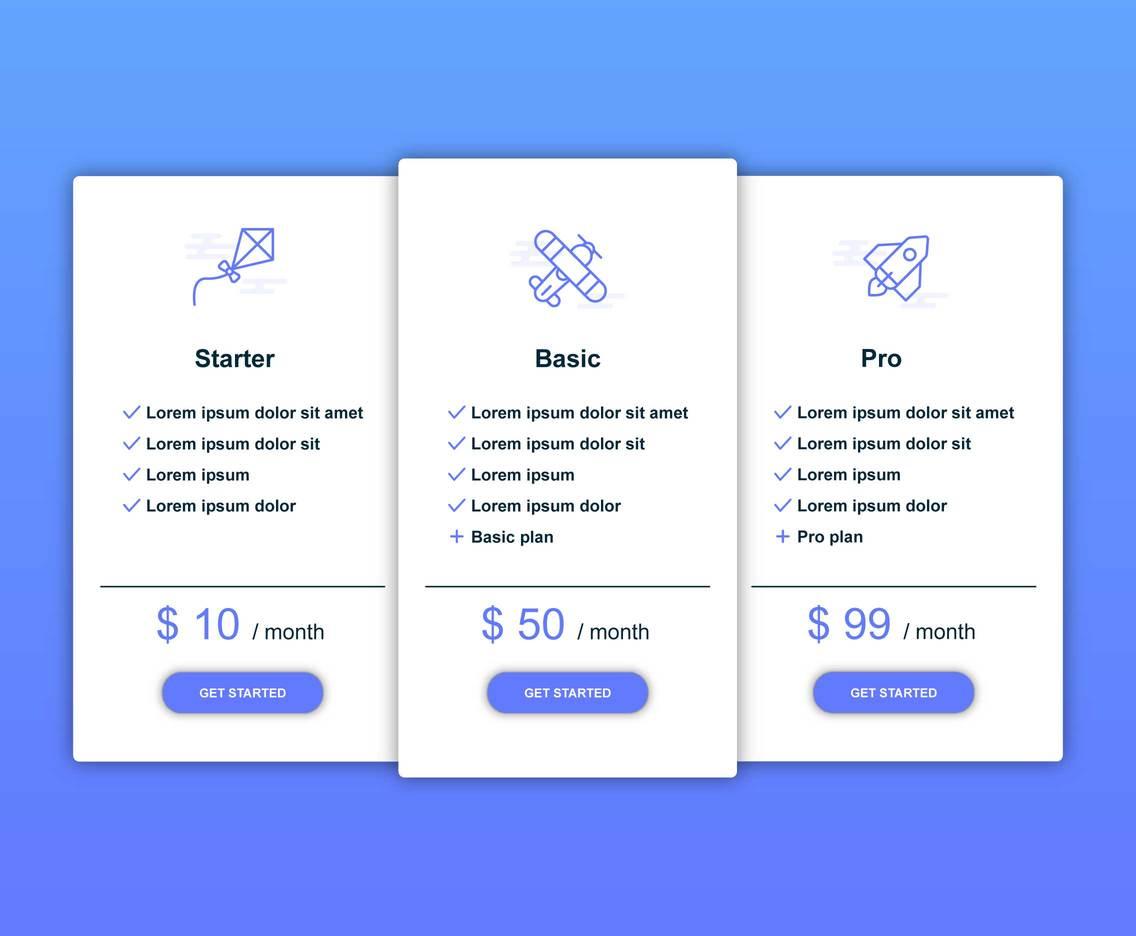
Pricing Plans Demystified: Finding the Best Value for Your Investment
When it comes to selecting an email marketing platform, understanding the pricing structures can be a daunting task.Many providers offer a range of plans, each tailored to different needs and budgets. This diversity can make it arduous to pinpoint the best value for your investment. To help you navigate this landscape,here’s a breakdown of essential factors to consider when evaluating pricing plans.
- Monthly vs. Annual Billing: Most platforms offer discounts for annual subscriptions. If you’re confident in your choice, committing to a yearly plan can save you a significant amount in the long run.
- Subscriber Limitations: Pricing often scales with the number of subscribers. Make sure to assess your current and future needs to avoid paying for excess capacity that you don’t use.
- Feature Set: Not all plans offer the same features.Basic plans might lack essential tools like automation, segmentation, and advanced analytics. Be sure to compare what’s included in each tier.
- Support Options: Some platforms charge extra for premium customer support. If you anticipate needing help, factor this into your overall cost analysis.
Let’s take a closer look at some popular email marketing platforms and their pricing plans:
| Platform | Starting Monthly Price | Key Features |
|---|---|---|
| Mailchimp | $13 | Automation, Segmentation, Analytics |
| constant Contact | $20 | Email Templates, List Segmentation |
| SendinBlue | $25 | Unlimited Contacts, SMS Marketing |
| AWeber | $19 | landing Pages, Automation |
While the numbers tell part of the story, the real value lies in how well a platform meets your specific needs. Take advantage of free trials or demos to test the waters before fully committing. Remember, the most affordable option isn’t always the best; consider how each platform can facilitate your email marketing strategy and drive your business goals.
a thorough evaluation of pricing plans will help you find the best fit for your association. By aligning your needs with the right features and support options, you can secure a robust email marketing solution that not only fits your budget but also empowers your growth.
Segmentation and Personalization: why They are Game Changers
In the fast-paced world of digital marketing, segmentation and personalization stand out as pivotal strategies that can significantly enhance your email campaigns. By dividing your audience into distinct segments based on various criteria—such as behavior, demographics, or past purchases—you can tailor your messaging to resonate more effectively with each group. This targeted approach not only increases engagement rates but also fosters a sense of connection between your brand and your customers.
Personalization takes this a step further by allowing you to deliver content that speaks directly to the individual. Here are some key benefits of implementing these strategies:
- Higher Engagement: Tailored content captures attention, leading to increased open and click-through rates.
- Improved Customer Experience: When users receive relevant content,they feel valued,which enhances their overall experience with your brand.
- Increased Conversions: Targeted messages can guide customers through the buying journey, ultimately leading to higher conversion rates.
- Better ROI: By focusing on specific audience segments, you allocate resources more efficiently, yielding a greater return on investment.
To illustrate the impact of segmentation and personalization, consider the following table that compares engagement metrics before and after implementing these strategies:
| Metric | Before Segmentation/Personalization | After Segmentation/Personalization |
|---|---|---|
| Open Rate | 15% | 30% |
| Click-Through Rate | 2% | 10% |
| Conversion Rate | 1% | 5% |
As you can see, the difference in performance metrics is striking. By investing in segmentation and personalization, businesses can unlock the full potential of their email marketing campaigns. This not only empowers brands to communicate more effectively but also strengthens customer loyalty and drives long-term growth.
Automation Capabilities That Will Save You Time and Boost Engagement
Modern email marketing platforms have transformed the way businesses interact with their audiences, enabling streamlined processes that save time while enhancing engagement. One of the standout features of these platforms is their automation capabilities, which allow marketers to set up campaigns that run seamlessly in the background. Imagine being able to nurture leads without lifting a finger, thanks to automated workflows that deliver the right message at the right time.
Here are some key automation features that can revolutionize your email marketing strategy:
- Welcome Emails: Automatically send a series of welcome emails when someone subscribes to your list, setting the tone for an engaging relationship.
- Behavioral Triggers: Utilize user behavior,such as website visits or abandoned carts,to send targeted emails that prompt action,significantly increasing conversion rates.
- Segmentation: Automatically segment your subscribers based on their preferences, ensuring that each message resonates with individual interests and needs.
- A/B Testing: Automate the process of testing different subject lines or content formats, helping you quickly identify what works best without manual intervention.
To further illustrate the effectiveness of automation, consider utilizing a simple comparison table that outlines the benefits of manual versus automated email processes:
| Feature | Manual Process | Automated Process |
|---|---|---|
| Time Investment | High | Low |
| Personalization | Limited | Dynamic |
| Engagement Rate | Variable | Consistent |
| Follow-Up Emails | Ad-hoc | Scheduled |
Moreover, these automation tools often come equipped with analytics that provide valuable insights into campaign performance. You can track open rates, click-through rates, and engagement metrics without the hassle of gathering data manually. This allows you to refine your strategies continuously, ensuring you’re always hitting the mark with your audience.
By embracing these automation features,you’re not just saving time; you’re also creating a more personalized experience for your subscribers. This level of customization can significantly enhance engagement, leading to stronger relationships and, ultimately, increased revenue. in the fast-paced world of digital marketing, leveraging automation is no longer optional—it’s essential for staying ahead of the competition.

Customer Support: How It Affects Your Email Marketing Success
In the fast-paced world of email marketing, having a robust customer support system can significantly enhance your campaign’s success. When customers encounter issues, whether it’s navigating your email platform, troubleshooting delivery problems, or understanding analytics, responsive support can make all the difference. A swift resolution to their concerns not only builds trust but also encourages continued engagement with your brand.
Consider these benefits of effective customer support:
- Improved User Experience: A knowledgeable support team can guide your users through complex features, helping them maximize their email marketing efforts.
- Enhanced Customer Retention: When customers feel valued and supported, they are more likely to stick with your platform, increasing their lifetime value.
- Reduced Frustration: Quick responses to inquiries can alleviate user frustration, preventing potential churn and fostering loyalty.
- Informed Decision-Making: Effective support can provide insights into the best practices for optimizing campaigns, leading to better results.
Additionally, consider the following aspects when evaluating customer support features of email marketing platforms:
| Platform | Support Channels | Response Time |
|---|---|---|
| Platform A | Email, Chat, Phone | Under 1 hour |
| Platform B | Email, Knowledge Base | 24 hours |
| Platform C | Chat, Phone | Immediate |
Ultimately, the quality of customer support can be a game-changer in your email marketing strategy. Investing in a platform that prioritizes customer service not only smoothens your operational processes but also leads to higher satisfaction rates among your clients. When your audience feels supported, they are more likely to respond positively to your campaigns, driving your overall marketing success.
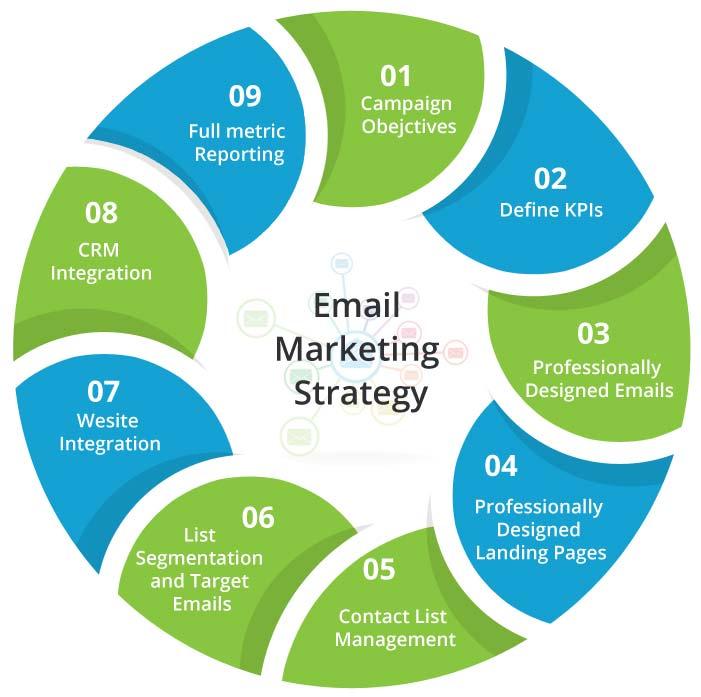
Integrations That Enhance Your Email Marketing Strategy
To truly maximize your email marketing efforts, it’s essential to leverage integrations that streamline processes, enhance data analysis, and improve customer engagement. With the right tools at your disposal,email marketing can transform from a simple outreach tactic into a powerhouse of customer retention and sales growth.
CRM Integrations are at the forefront of effective email marketing. By connecting your email platform with Customer Relationship Management (CRM) systems like Salesforce or HubSpot, you can deliver personalized messages that resonate deeply with your audience. This tailored approach not only increases open rates but also fosters stronger relationships with your customers.
Another crucial integration is with eCommerce Platforms.If you’re using Shopify, WooCommerce, or Magento, integrating these platforms with your email marketing software allows you to send automated cart abandonment emails, product recommendations, and post-purchase follow-ups. This not only helps in recovering perhaps lost sales but also enhances the overall customer journey.
Don’t overlook the power of analytics tools. Integrating platforms like Google Analytics with your email marketing software provides insights into email performance, user behavior, and ROI. This data is invaluable for optimizing future campaigns, enabling you to make informed decisions that drive results.
| Integration Type | Benefits |
|---|---|
| CRM | personalized communications and improved customer insights |
| eCommerce | Automated follow-ups and enhanced shopping experience |
| Analytics | Performance tracking and data-driven decision making |
| Social Media | Wider reach and enhanced engagement through social sharing |
Lastly, consider integrating social media platforms to amplify your email campaigns. By linking your email efforts with channels like Facebook, Twitter, and Instagram, you can encourage sharing and increase your audience reach. This creates a multifaceted marketing approach that keeps your brand top of mind across various touchpoints.

Real User Reviews: Insights from Businesses Like Yours
User Insights
Discovering the best email marketing platform can feel like searching for a needle in a haystack, but real user experiences can make all the difference. Here’s what businesses like yours have to say about their journeys with various platforms:
Mailchimp has been a favorite for many small businesses. One user mentioned, “The user-friendly interface made it easy for our team to launch our first campaign without any prior experience. The automation features saved us hours!” it’s clear that Mailchimp’s intuitive design is a huge plus, allowing even the most novice marketers to get up and running quickly.
Conversely, Constant Contact received accolades for its robust customer support. A cafe owner shared, “Whenever we had questions, the support team was just a call away. They helped us tailor our campaigns to better suit our local clientele.” This kind of personalized assistance can be invaluable for businesses looking to enhance their marketing strategies.
For companies that prioritize data and analytics,ActiveCampaign stood out. A marketing director noted, “The detailed reporting features helped us track our success in real-time, allowing us to pivot our approach quickly.” This highlights how crucial it is for businesses to choose a platform that not only sends emails but also provides insights that drive decision-making.
| Platform | Key Features | User Rating |
|---|---|---|
| Mailchimp | User-friendly, automation tools | 4.5/5 |
| Constant Contact | Excellent support, event marketing | 4.6/5 |
| ActiveCampaign | Advanced analytics, CRM integration | 4.7/5 |
Lastly, businesses looking for affordability often mention SendinBlue. A startup founder remarked,“the pricing is unmatched,especially for the features we get. It has allowed us to stretch our marketing budget further than we thought possible.” This is a testament to the platform’s ability to provide value without breaking the bank.

Final Thoughts: Making the Best choice for Your email Marketing Journey
Choosing the right email marketing platform is a pivotal decision that can significantly influence your business’s success.With a multitude of options available,it’s essential to evaluate features that cater to your specific needs. Consider aspects such as user-friendliness, pricing, automation capabilities, and customer support. Each platform offers unique advantages that can align with different marketing strategies.
Here are some key factors to ponder:
- Integration: Ensure the platform integrates seamlessly with your existing tools, such as CRM systems and e-commerce solutions.
- Scalability: as your business grows, your email marketing needs will evolve. Choose a platform that can scale along with you.
- Analytics: Robust analytics can provide insights into your campaigns’ performance, helping you make data-driven decisions.
- Customer Support: Reliable customer support can save you time and frustration, especially during critical campaign launches.
Additionally, it’s wise to look into the pricing structures of the platforms you’re considering. Some platforms offer free tiers, while others are subscription-based. Be sure to assess what features you’re getting for your investment. Here’s a quick comparison of popular email marketing platforms based on pricing and features:
| Platform | Starting Price | Key Features |
|---|---|---|
| Mailchimp | Free | Basic automation, templates, and analytics |
| ConvertKit | $29/month | Tagging, funnels, and landing pages |
| SendinBlue | Free | Email marketing, SMS marketing, and chat |
| GetResponse | $15/month | Automation, webinars, and landing pages |
Ultimately, the best choice depends on your individual goals and the specific requirements of your marketing strategy. Test out a few platforms through free trials to gain hands-on experience and determine which one feels most intuitive to you. Remember, your email marketing journey is not just about sending emails; it’s about building meaningful connections with your audience.Choose wisely, and watch your engagement soar!
Frequently Asked Questions (FAQ)
Q&A: A Guide to the 14 Best Email Marketing Platforms
Q1: Why should I invest in an email marketing platform?
A1: Great question! Investing in an email marketing platform can supercharge your marketing efforts. It helps you reach your audience directly in their inbox, fostering engagement and building relationships. Plus, email marketing boasts a high ROI—some studies suggest an average return of $42 for every dollar spent! So, it’s not just an expense; it’s a smart investment in your business’s growth.
Q2: What features should I look for in an email marketing platform?
A2: When choosing an email marketing platform, you want to look for key features like user-friendly design tools, automation options, list segmentation, and analytics. Personalization capabilities are crucial too—tailoring your messages can significantly boost engagement. Don’t forget to consider deliverability rates and customer support; after all,you want your emails to actually land in inboxes!
Q3: how can I choose the best email marketing platform for my business?
A3: Start by assessing your specific needs. Are you a small business or a large enterprise? Do you need advanced automation or are you just getting started? Look for platforms that cater to your budget and provide the features that align with your marketing goals. Reading reviews and comparing platforms side-by-side can also help you make an informed decision.
Q4: Can you give me a sneak peek of some top email marketing platforms?
A4: Absolutely! Some of the standout platforms include Mailchimp, known for its user-friendly interface; Constant Contact, which excels in customer support; and HubSpot, which offers robust marketing automation. Then there’s SendinBlue, which is fantastic for transactional emails, and ActiveCampaign, perfect for advanced automation needs. Each platform has its unique strengths, so you’ll find one that matches your goals.
Q5: How do I know if my email campaigns are triumphant?
A5: Success can be measured through various key performance indicators (KPIs) like open rates, click-through rates, conversion rates, and unsubscribe rates. Most email marketing platforms provide detailed analytics dashboards that make it easy to track these metrics. Regularly reviewing your campaign performance will help you tweak your strategies for even better results!
Q6: Is email marketing still effective in 2023?
A6: Absolutely! Email marketing is not only effective but is also evolving. With advancements in automation and personalization, it’s more impactful than ever. People still check their emails regularly, making it a reliable channel for reaching your audience.Plus, integrating email with other marketing efforts can create a cohesive strategy that drives results.
Q7: What are some common mistakes to avoid when using email marketing?
A7: One major mistake is sending generic emails to your entire list without segmentation. People appreciate personalized content! Additionally, neglecting mobile optimization or failing to comply with privacy regulations can hinder your success. And don’t forget to engage your audience with relevant content—nobody likes a one-sided conversation.
Q8: How often should I send out emails?
A8: The ideal frequency can vary based on your audience and goals. A good rule of thumb is to aim for consistency. Whether that’s weekly, bi-weekly, or monthly, stick to a schedule so your audience knows what to expect.Just be careful not to overwhelm them—too many emails can lead to unsubscribes!
Q9: Do I need design skills to create effective email campaigns?
A9: Not at all! Most email marketing platforms come with customizable templates that make it easy for anyone to create beautiful emails,even without design skills. You can simply drag and drop elements to create a professional-looking campaign that resonates with your audience.
Q10: Where can I find more information on the best email marketing platforms?
A10: You’re in luck! Our comprehensive guide to the 14 best email marketing platforms is packed with insights, comparisons, and tips to help you choose the right one for your business. Dive in, explore the options, and find the perfect fit to elevate your email marketing game!
to sum up
As we wrap up our exploration of the 14 best email marketing platforms, it’s clear that choosing the right tool can be a game changer for your business.Whether you’re a small startup or an established brand, the right email marketing platform can help you connect with your audience, boost engagement, and ultimately drive sales.Remember, the goal isn’t just to send emails; it’s about crafting meaningful connections and fostering relationships with your subscribers. So, take some time to assess your specific needs, budget, and goals. Experiment with the platforms that resonate with you, and don’t hesitate to leverage free trials—after all, the best way to find your perfect match is to dive in and see what feels right.
With the right email marketing platform on your side, you’ll be well on your way to creating campaigns that not only reach inboxes but also inspire action. So go ahead, take that leap, and start building your email marketing strategy today. Your audience is waiting!

